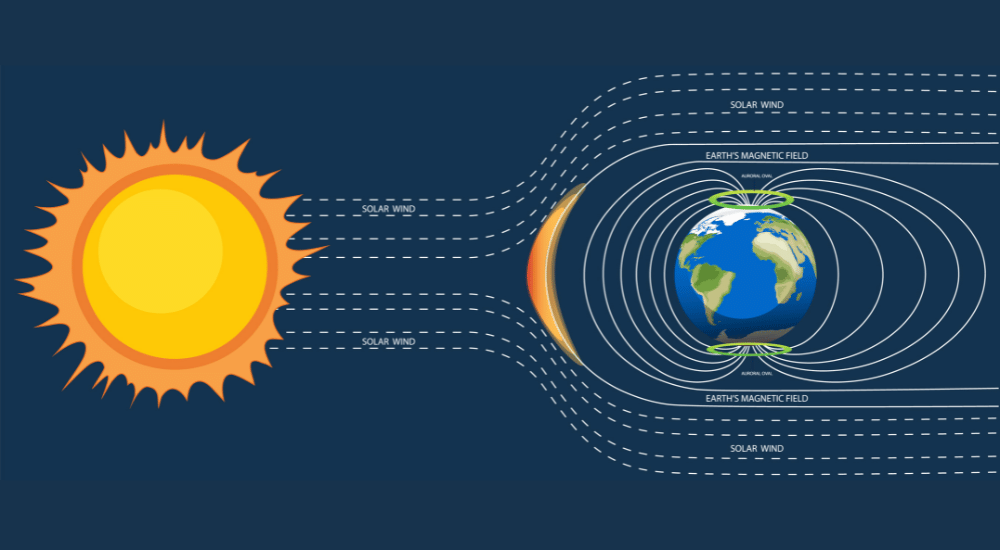16. Which of the following is not a factor affecting the strength of Earth’s magnetic field?
(A) Geomagnetic reversals
(B) Earth’s rotation
(C) Distance from the magnetic poles
(D) Solar activity
(C) Distance from the magnetic poles
Explanation: Distance from the magnetic poles does not affect the strength of Earth’s magnetic field. The strength of the magnetic field is primarily influenced by factors such as the Earth’s core dynamics, the presence of molten iron in the outer core, and geophysical processes within the Earth.
17. The region of Earth’s magnetosphere where charged particles are trapped by the magnetic field is called the:
(A) Aurora borealis
(B) Van Allen radiation belts
(C) Polar vortex
(D) Coronal mass ejection
(B) Van Allen radiation belts
Explanation: The Van Allen radiation belts are regions of trapped charged particles (primarily electrons and protons) in the Earth’s magnetosphere. These belts are named after James Van Allen, who discovered them using data from the Explorer 1 satellite.
18. What is the term for the phenomenon where a magnetic field induces an electric current in a conductor?
(A) Electromagnetic radiation
(B) Magnetic resonance
(C) Faraday’s law of electromagnetic induction
(D) Ampere’s law
(C) Faraday’s law of electromagnetic induction
Explanation: Faraday’s law of electromagnetic induction states that a changing magnetic field induces an electric current in a nearby conductor. This phenomenon forms the basis of many electrical devices and technologies.
19. What is the average strength of Earth’s magnetic field at the surface?
(A) 1 tesla
(B) 10 milli Tesla
(C) 25 micro Tesla
(D) 50 nanotesla
(C) 25 micro Tesla
Explanation: The average strength of Earth’s magnetic field at the surface is approximately 25 micro Tesla (µT). However, it can vary in different locations and over time.
20. The study of the behaviour and effects of magnetic fields in the Earth’s upper atmosphere is known as:
(A) Aeromagnetism
(B) Magnetostriction
(C) Ionospheric physics
(D) Magnetic hysteresis
(C) Ionospheric physics
Explanation: Ionospheric physics is the study of the behaviour and effects of magnetic fields in the Earth’s upper atmosphere, specifically the ionosphere. The ionosphere is a region of the Earth’s atmosphere where the gas particles are ionized by solar radiation.










